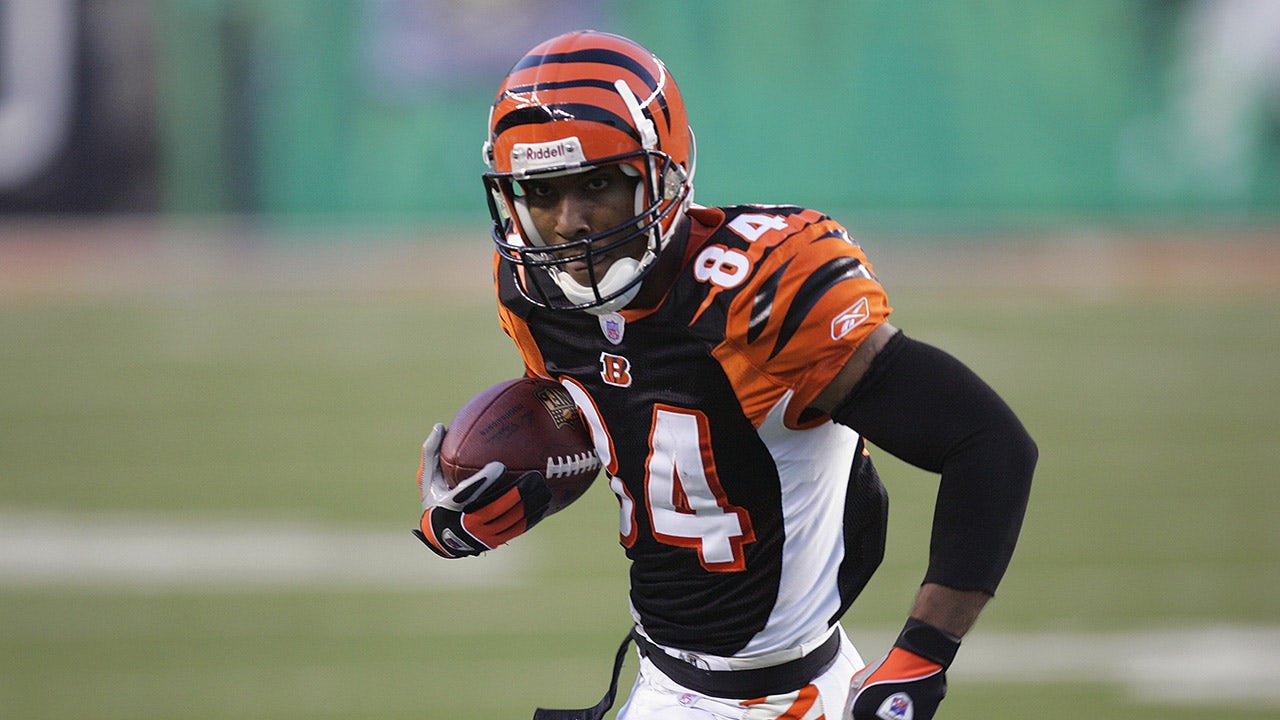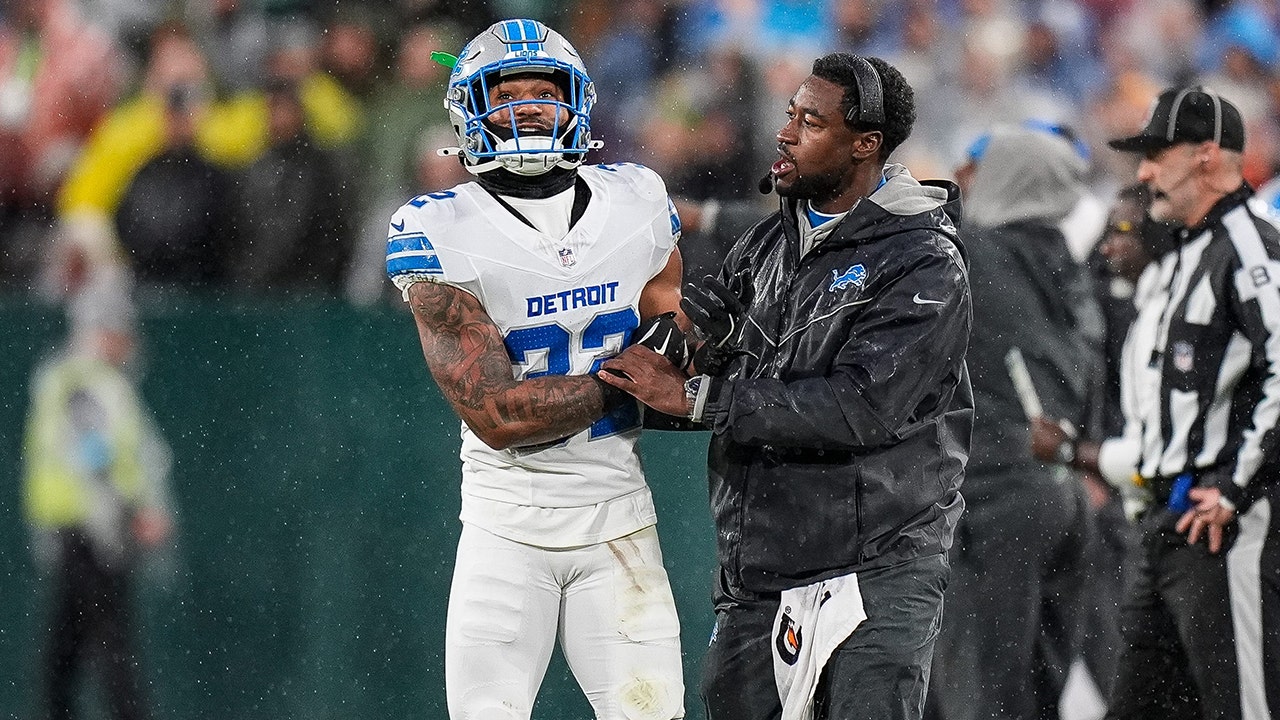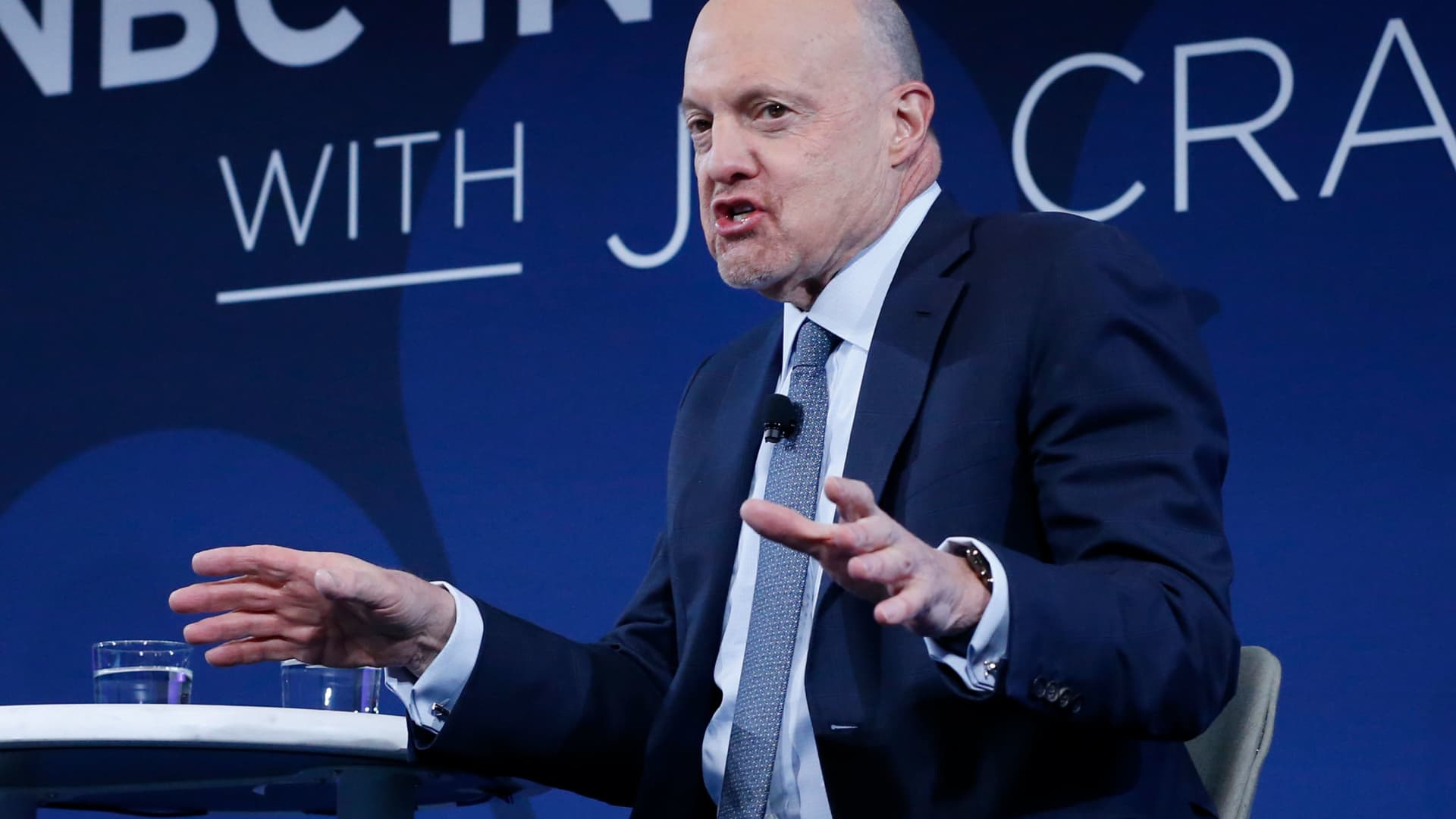Enough with the confusion. Let me lay it out for you. We want the Federal Reserve tightening cycle to end and to end now. We do not want an immediate set of interest rate cuts because there’s little doubt that by doing so the Fed will undo a lot of what it has accomplished and it has accomplished a great deal. But it’s not enough to take inflation down to 4% let alone 2%. which is its ultimate target. Sticky inflation Why is that? I have perused the quarterly reports of nearly every major company in the last week of February and all of March and it remains pretty simple: Rates are not high enough to reverse inflation let alone cause deflation. It will be very difficult for the Fed to do anything. Some of this is because of labor, the other half of the Fed’s dual mandate to maximize employment and keep prices stable. Some of it is because of supply chain issues, which reverberate throughout the system. Elsewhere, average homes pre-Covid pandemic were $383,000. Now they are $440,000. And, when we look at the great homebuilders in this country, they simply aren’t producing enough to cause prices to fall; peak but not fall. Rent is terrible — $1,023 for an average apartment in 2019 goes for $1,380 — and while, anecdotally we hear it might be coming down, there is nothing conclusive. Work from home has in part jacked up food prices, and the increase is about 14% above just last year. The average price for food has increased about 2% a year. It’s been double digits since the pandemic. Can it get better? Since spring 2020, hogs are up 103%; chicken is up 121%; soybeans are up 73%; corn up nearly 109%. New cars have jumped from $37,800 to $49,900 just in the period from 2021 to 2023. Gasoline has gone from $2.19 per gallon to $3.43. Diesel has rallied from $2.59 per gallon to $4.58 although it, like many other commodities, has traded higher. All of these have exacerbated labor shortages. Still, the average wage isn’t up as much as you think — from about $54,000 per year to $60,000. It’s been swelled dramatically by now-ended federal programs. Debt has increased to match or exceed how much was taken in, hence a huge spike in credit card debt; call it a trillion dollars up from about $927 billion since 2019. These prices have combined to create a more liquid consumer, so liquid that monies coming into banks increased dramatically with most banks now having deposits well above insurance rates. If banks deposited those monies during our record-low interest rates, call in 2021, and then went out longer than 10 years they were crushed when the Fed raised rates so quickly. As they had thought they could hold those bonds to maturity, they didn’t think they were at risk of bank runs. Banking crisis They were wrong, and Silicon Valley Bank got caught in instant bank runs by noisy billionaire venture capitalists who were illiquid because there have not been any IPOs — not very sympathetic in Washington. And, they didn’t have enough deposits to meet the redemptions without taking hefty charges on their underwater bonds when they sold them. If the federal government had acted faster and if Goldman Sachs (GS) hadn’t misplaced an offering, I am confident there would have been no mini-crisis at all, because the other two banks that went under were largely associated with crypto withdrawals. The only bank that looks like Silicon Valley Bank is First Republic Bank (FRC) because it, too, has suffered huge deposit withdrawals. Why? Because, like SVB, it invested in the wrong part of the yield curve — and, like SVB, it offered loans against illiquid collateral including investments in pre-IPO stocks and vineyards and precious assets that could not be sold quickly or were worthless. I have examined literally all the major banks and independents. And, other than Charles Schwab (SCHW), I have seen no major mismatch, and Schwab has more than $7 trillion of sticky assets. That means if you short Schawb — as the great, legendary trader Jim Fisk said in the Gilded Age, short gold — invite me to your funeral. This brings us to the last two weeks when we imported our woes from Europe, where Credit Suisse saw a bond cram down of a shocking $17 billion but left equity holders with about half the price of the day before and a shotgun wedding with UBS (UBS). A bunch of hedge funds tried to break Deutsche Bank (DB) last week by shorting the stock and buying credit default swaps (essentially default insurance). But they failed because unlike Credit Suisse which hadn’t made money in years, Deutsche Bank, after some really lean years, was extremely profitable. Bad target, as our stocks rallied hard after that imbroglio ran its course from a down-and-out 1% decline at 5 a.m. ET until Europe closed at about noon ET when our market took off. Fed conundrum Fast forward to the present: There is no doubt in my mind that the Fed wanted very much to raise rates by 50 basis points last week (instead of 25 basis points) because of all the things I just outlined. We are running at 5% year-over-year inflation down from 6% but nowhere near the pre-pandemic. We have seen credit soar but job growth remains robust even if we are seeing less wage-boosting job-hopping. The firings have been almost all in white collar jobs and they have generous packages — even firing magician Mark Zuckerberg gave laid-off workers at Club holding Meta Platforms (META) five months of good pay. So the deflationary effect of white-collar workforce reductions is delayed. So the Fed had to move. Why didn’t it do more? I think that it stayed its hand because it finally realized what moguls like Barry Sternlicht predicted, we don’t know who was getting hurt by the rapid rise in rates. Now we do, but it has produced stress throughout the commercial estate area, where banks have been discouraged from lending, bringing scarcity down to 2009 levels. I wish I could say housing could take up the slack but it just hasn’t; I measure about 18% fewer homes being sold than last year. Millennials have joined Gen X as first-timers buying homes keeping a floor on prices even as higher rates have slowed buyers overall which has caused homebuilders to cut back construction. This, too, will play a role in staying the Fed’s hand. But, here’s the question that impacts the stock market directly and certain sectors in particular: How has the mini-crisis in banking impacted the overall growth of the economy? Have sales of anything slowed? Have wages stopped going up? How about prices? The answer is some, certainly all down from pandemic prices but none that I can find lower than 2019. That’s a certain defeat for the Fed. Without the benefit of another bank failure, the recent bank failures and concomitant lending strictures will slow the economy. I regard it as equivalent to about 100 basis points worth of fed funds, call it 5.75%, which will have an impact for certain, particularly on credit card lending — they seem to take it up in unison no matter what the hike — and autos. Long rates have actually decreased because of the crisis, making housing rebound but not price increases. I think that’s because of labor-short immigration (and the other causes detailed above). It will barely dent hiring because we have had a switch to consumer spending for services from goods, as part of the Long on Money, Short on Time ethos that is left over from the pandemic, although the overall workforce has started to increase. Still travel and eating at home have increased and are showing no signs of slowing down despite the end of the savings spent and the beginning of the credit card drag. The decision by some companies, still not that many, mandating central office work can have an impact and will most likely spell the end of rampant work-from-home, which will bring down finished food prices, again not by much. These layoffs are concentrated in B & C quality commercial real estate, not at all in A, virtually anywhere. But B & C is down big in San Francisco (down 40%) and in New York City (down about 20%). Both are frantically trying to turn these buildings into apartments, about 40,000 in New York alone, but the fight will be a tough one because commercial property generates much higher taxes. It’s not a savior. But I have gone over all of the large commercial real estate investment trusts (REIT) and I would venture to say that even SL Green (SLG), a Manhattan commercial REIT with lots of B & C buildings won’t be enough to stem the cranes. Too much housing is needed. Still, there’s some impact we don’t know about yet. We can’t tell how big the impact of withdrawals might be on small- to medium-sized banks. But we know, they weren’t outrageous at about $100 billion last week. So that drag may be coming to an end. Confidence is slowly returning but not enough to stem consumer spend or commercial spend. It just may not show up in time to make March a weak month, especially because of no wage declines and because of sticky apparel prices. I can’t find them but the Fed can, maybe they aren’t looking at the sales, or at off-price retailers Burlington (BURL), Ross Stores (ROST) and Club holding TJX Companies (TJX)? The Fed has until May to find out if there is more fallout. They can take a break because of the newfound drag but if we don’t see real layoffs, especially in retail and manufacturing, they will be back at work raising rates then to help return prices in a pyrrhic battle to 2%. The road ahead What can change that this week? I like the following companies’ numbers more than the government’s because they are real-time without any latency. They are the forerunners and give us an edge. We will get a good read for going out versus staying home from McCormick (MKC), which has both bases covered. You have to wonder if they say food inflation may be waning although we didn’t hear about that from General Mills (GIS) this week. We will find out if small- and medium-sized businesses of blue-collar — Cintas (CTAS); and white-collar — Paychex (PAYZ) — have seen any impact from price controls. I suspect not. We can gauge luxury spend from Lululemon (LULU) and RH (RH), and electronics spend from Micron Technology (MU), which I think will show one up and one down respectively. Given that electronics is the one area that has fallen almost back to 2019 levels that could be a godsend. We know that from Best Buy ‘s (BBY) recent numbers and Club holding Costco ‘s (COST), too, which is frantically trying to bring prices down to 2020 levels. So what does it mean for all our portfolio stocks? Soon we’ll be having our Monthly Meeting (this Tuesday, March 28 at noon ET), when we give outlooks on each stock. But suffice it to say that the slowdown stocks are going to be front and center because of the implicit 100 basis point Fed increase from the credit crisis. The industrials will begin to gauge the impact of the Inflation Reduction Act and the CHIPS and Science Act beginning this quarter, which can offset things. But we know from the truly drastic decline in shipping from Asia, mostly China, that retailers are preparing for some weaker, more promotional numbers. Tech has become a have-and-have-not business with the companies that have pivoted from losses to generally accepted accounting principles (GAAP) profitability — think Club holding Palo Alto Networks (PANW), our only pivot stock, really on the launching pad. We don’t know the state of the big guns although Club-owned Nvidia (NVDA) is shopping cards like mad, Club name Microsoft (MSFT) is buying them like mad, and Oracle (ORCL), Adobe (ADBE) and Club-holding Alphabet ‘s (GOOGL) Google will be integrating them into their offerings soon enough. These are all companies that are going to bring down labor costs. But, again, chiefly white collar because corporate America away from tech, seems baffled about how to use it effectively. I think that’s a 2024 concept. The most exciting user of chat and Nvidia cards hasn’t even been heard from yet: Meta. It’s got three things going for it: a rejuvenated Instagram because of travels, increased use of WhatsApp, which can be worth about half the company if spun off, and Reels, the defacto winner if TikTok is stopped. The faux argument of an angry 150 million users is trumped by the parents as most of the 150 million might not even be old enough to vote. It’s the actual Meta that matters as I believe a flat-screen product could be in the offering with Nvidia chips, so necessary if it is to go mainstream. I think Meta has figured out how to crack Club-holding Apple ‘s (AAPL) gate and will soon be able to offer unfettered advertisements. Google has already adjusted to a chat world with an excellent ad offering that might increase sales. Apple’s an open book. We don’t know about sales because we don’t know about China. Nike (NKE)said China orders were good, so did Club stock Starbucks (SBUX). I suspect that Caterpillar (CAT) will say the same and fellow Club name Estee Lauder (EL), too. But, Apple runs the risk of a slowdown only because its products are more complicated to make and production suffered late in the China supply chain. No matter everything FAANG plus Meta is in good shape and the fact that Netflix (NFLX) is actually doing better — the crackdown on passwords in Canada has peaked, and as of Thursday sign-ups have continued, bodes well for Club-stock Disne y’s (DIS) streaming. I still like consumer spend for savings, Costco and TJX, but the rest of the portfolio remains heavy on slowdown stocks as we will go over at the Morning Meeting (Monday to Friday at livestreamed at 10:20 a.m. ET). The consumer price deflator figures that come out on Thursday with GDP probably won’t reflect much of the turmoil either, calling into question my 100 basis point implicit increase. Save that for April. (The Fed’s favorite inflation gauge, the personal consumption expenditures (PCE) index is out Friday .) The mini-crisis has given stocks some breathing room. Bond yields are much, much lower giving stocks, especially safety stocks, much less competition and they should stay low until the May meeting as worries about commercial real estate will roil the group. That makes me truly excited about our stocks. I would be more pumped about our small oil position if it weren’t for my go-to energy expert Rusty Braziel saying that natural gas can still fall more before it gets up, putting pressure on Club holding Halliburton (HAL), which provides services to oil and gas producers, short term. Any upturn in nat gas would benefit Club holding Coterra Energy (CTRA), hence its recent outperformance, if you can call it that. Bottom line By no means, do I want to minimize whatever is thrown at the banking system. I think the comments by Treasury Secretary Janet Yellen last week that offered a populist “no bailout” view failed to recognize that if you owned securities in anything related to Silicon Valley Bank, Signature Bank or Silvergate Capital you lost everything even as depositors were made whole. The Biden administration is worthless on the crisis because it knows the plaintiffs are unsympathetic and the president doesn’t want to be perceived as bailing out anything. Fortunately, Fed Chairman Jerome Powell is not political so things will stay contained at 100 basis points implicit tightening. As counterintuitive as it is, the banking row will give the 4.8% fed funds rate a chance to cool consumer spending. It can knock off some retailers and some commercial properties but not much else given the inability to produce more houses, by mortgage reluctance, even as there isn’t much; and autos, which still have supply chain problems, as this time it’s a battle for chips between internal combustion engines (ICEs) and electric vehicles (EVs) as Club holding Ford (F) made somewhat evident in this week’s teach-in. The possibility of a further decline in fuel as represented by gasoline could be in the cards and is definitely in the cards for all sorts of plastics, but those prices won’t be passed on to the consumer, hence the rally in Club holdings Procter & Gamble (PG) and what a stillborn price increase by Johnson & Johnson (JNJ) for fear of talc litigants. This gives stocks a window to advance until we begin earnings season with what will no doubt be a cautious banking sector. That will cause all stocks to go lower. But that’s a three-weeks-away issue and in this stock market you can build a real head of steam until we get there. (Jim Cramer’s Charitable Trust is long META, TJX, COST, MSFT, GOOGL, AAPL, SBUX, CAT, EL, DIS, HAL, CTRA, F, PG, JNJ. See here for a full list of the stocks.) As a subscriber to the CNBC Investing Club with Jim Cramer, you will receive a trade alert before Jim makes a trade. Jim waits 45 minutes after sending a trade alert before buying or selling a stock in his charitable trust’s portfolio. If Jim has talked about a stock on CNBC TV, he waits 72 hours after issuing the trade alert before executing the trade. THE ABOVE INVESTING CLUB INFORMATION IS SUBJECT TO OUR TERMS AND CONDITIONS AND PRIVACY POLICY , TOGETHER WITH OUR DISCLAIMER . NO FIDUCIARY OBLIGATION OR DUTY EXISTS, OR IS CREATED, BY VIRTUE OF YOUR RECEIPT OF ANY INFORMATION PROVIDED IN CONNECTION WITH THE INVESTING CLUB. NO SPECIFIC OUTCOME OR PROFIT IS GUARANTEED.
CNBC Investing Club with Jim Cramer
Rob Kim | NBCUniversal
Enough with the confusion. Let me lay it out for you. We want the Federal Reserve tightening cycle to end and to end now. We do not want an immediate set of interest rate cuts because there’s little doubt that by doing so the Fed will undo a lot of what it has accomplished and it has accomplished a great deal. But it’s not enough to take inflation down to 4% let alone 2%. which is its ultimate target.















































